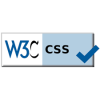The bounce rate for websites is a common concern for many businesses. You came to know when happens when users arrive at your website, stay for a few seconds, and leave it. This adds to the bounce rate.
It happened when visitors leave your site without going to another page or leave immediately. The average Bounce Rate for the business site is 45.68%. Normally, the bounce rate of e-commerce websites is between 20% and 45% only.
Bounce rate occurrence depends on various factors like, if your user field is large, your bounce rate will also be higher. This is a fact; it is inevitable.
For business websites, there will be a specific bounce rate. But, you must know when and how it begins to affect business productivity. A large bounce rate ratio is harmful, and it also reduces the chances of conversion rate.
We will see the breakdown of how bounce rate affects and what the causes are in this article. Building successful sites that consistently generate search traffic is not easy.
Lets’ get started.
Table of Contents
What Is Bounce Rate?
The business site should consider all the SEO activities when workings to increase the website’s search performance. One of the actions you need to do is to decrease the high bounce rate.
In other words, a high bounce rate is a sign of something wrong happening to your site, due to which you are not getting a successful conversation rate.
And, this is how your bounce rate increases are the percentage when user experience is lacking. All visitors who enter and exit on the same page, without any clicks to new pages or not redirected to other services are the cause.
- A high bounce could mean you don’t have an attractive, low-speed, well-organized landing page.
- It may also happen then your website may not have any landing page.
Imagine as a user; you are not getting the exact value or experience due to several factors; you will not stay on the website.
- It is worth investigating why the bounce rate is so high.
- Is the site visually appealing or challenging to navigate?
Bounce Rate and Exit Rate
Bounce rate and Exit rate are both crucial to address site engagement. To measure and check the rates of these two, you need to study all page views that session on the website pages.
- The Bounce Rate for a page is based only on sessions that start with that page. All bounces are exits, but not all exits are bounces.
- The rate that appears last in the session of the pageviews is Exit Rate.
Read more to identify the difference between the Bounce Rate and the Exit rate.
How to calculate the bounce rate?
A high bounce rate indicates that you may not be able to get your users to stay on the website and not convince them to visit other pages. You need to ensure the call to action on the web page (more than 2-3 CTAs on the page).
Call-to-action buttons and links will help you improve conversions by signing up, booking an appointment, and buying your product.
On a web page, to the total number of entries in a given period, the standard bounce rate is the total number of page views.
Check the bounce rate by using the Hum Commerce tool to check for all pages of your eCommerce website.
Possible causes for a high bounce rate:
1. Single page with no sub-pages or internal link:
Here, the web analysis tool will not record further page loads except the user reloads it. Other following methods like event tracking or download tracking to analyze user interaction can be used.
2. Poor page design:
Users will leave the page and search for another site if your website is not attractive and takes high time to load. Your web page does not appear as same as what they are looking for, and they are likely to leave the website without navigating.
If this is the case, you highly need to e the website to reduce the bounce rate.
3. Wrong implementation of the tracking code:
All website analyzing tool runs with a tracking code that is integrated to the source code. Bounce rate also generates for the wrong implementation of the code.
4. Poor content:
Any product or service site must not take the content lightly. You should show valuable and unique content to your audience. Poor content can also be the reason for high bounce rate as the
Bounce Rate Depends on These Success Factors
Here are the factors you must consider to reduce your bounce rate?
1. Internal Links
Internal links are one the most significant factors that highly affect SEO. They also substantially impact the bounce rate as users will tend to visit the website more.
You are adding the chance of making the user’s search to a firm conclusion and, at the same time, presenting them with multiple choices with the help of several links that lead to related sub-pages,
2. Good readability
Content stands as a vital factor for a website that helps to lower the bounce rate. Web content, Articles, and Blogs are the keys that offer valuable information to visitors in a well-structured format and easy-to-understand words.
- Long paragraphs that are hard to read should be avoided.
- You should have a standard structure for the content with bullets, paragraphs, and subheadings.
- Don’t forget to add images, videos, and quotes that add value to portray complex issues.
3. Clear Design
A good user experience is a must for any business site. It includes straightforward navigation, relevant design, and attractive website design. The user must immediately find their answers or services they are looking for around the website.
- All headings should therefore be structured and graphically pleasing.
- An unnecessarily and complex portrayal will be removed.
- When designing or optimizing a website, think from the user’s perspective. Also, the site should be compatible with all popular browsers to higher the chances of crawling.
4. Speed
Website loading speed may affect due to complex design elements and memory-intensive formats in the websites.
While developing and designing the website, user experience should be taken care of. The website design should be appealing, and loading time should be reduced.
A slow-loading website will cause impatience among users, and they will leave the site. Google PageSpeed Insights and RYTE Website Success are tools that allow you to check the website’s speed across devices.
5. Good keyword definitions :
We heard about the importance of keywords and their density. But, it should be used carefully and naturally in the content. You cannot use any keywords anywhere in the content.
It would be best to take care not to overuse your keyword in the content, making the article unnatural and hard to read. This may cause a high bounce rate. Optimize the long-tail keywords is the one way because users already have a sense of what they are looking for.
Rather than choosing essential keywords, decide the keywords you want traffic on and use them wisely.
6. Sparing use of ads
You should practice ads sparingly carefully to avoid frightening users off. Ads do not have to look promotional so as not to divert users from the website content. Even too many adverts are not suitable for the website.
The enhanced reputation of AdBlockers defines that most users have limited wish for ads. Still, Sparing use of ads is done by very few businesses as they play an essential part in sources of funding.
7. Mobile optimization
Mobile devices and their popularity among us are high were approximately 70% of users searching first on mobile devices. However, it’s we know some businesses have not optimized their site for mobile users.
It a mistake, and every company should offer a mobile version of the site that is easily accessible to all.
- Google is often addressing the importance of mobile-optimized pages and how necessary it was for Mobile users.
- To check your site for mobile devices, Google has revealed a free tool. Here, you can check your domain for mobile and see how it is performing.
It is the right time to optimize your site where you can begin with a resolution, fonts, loading times, or the use of plug-ins. Besides this, you can update the bounce rate with mobile optimization. It also undoubtedly affects the ranking in the mobile search results.
Conclusion
Most retail websites’ are between 20% and 45%, which is normal. But a high bounce rate is a known issue for several. The ratio of average bounce rates is different for various industries.
Simple is that if users find what they want without much of wait, they will continue, and the bounce rate will be low. As mentioned the causes, we should consider all aspects while redesigning the website to increase the conversion rate.


















